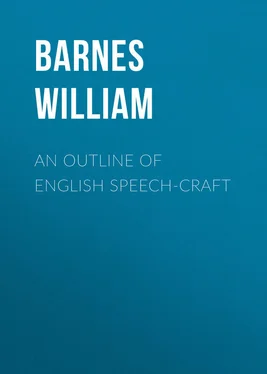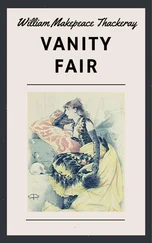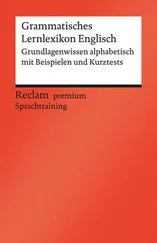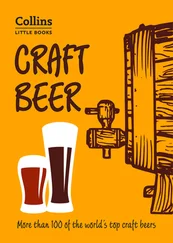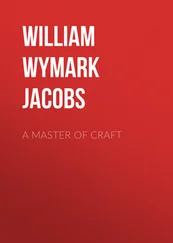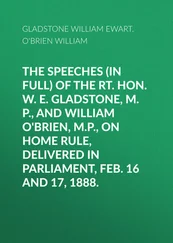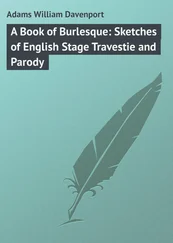William Barnes - An Outline of English Speech-craft
Здесь есть возможность читать онлайн «William Barnes - An Outline of English Speech-craft» — ознакомительный отрывок электронной книги совершенно бесплатно, а после прочтения отрывка купить полную версию. В некоторых случаях можно слушать аудио, скачать через торрент в формате fb2 и присутствует краткое содержание. Жанр: foreign_antique, foreign_prose, на английском языке. Описание произведения, (предисловие) а так же отзывы посетителей доступны на портале библиотеки ЛибКат.
- Название:An Outline of English Speech-craft
- Автор:
- Жанр:
- Год:неизвестен
- ISBN:нет данных
- Рейтинг книги:3 / 5. Голосов: 1
-
Избранное:Добавить в избранное
- Отзывы:
-
Ваша оценка:
- 60
- 1
- 2
- 3
- 4
- 5
An Outline of English Speech-craft: краткое содержание, описание и аннотация
Предлагаем к чтению аннотацию, описание, краткое содержание или предисловие (зависит от того, что написал сам автор книги «An Outline of English Speech-craft»). Если вы не нашли необходимую информацию о книге — напишите в комментариях, мы постараемся отыскать её.
An Outline of English Speech-craft — читать онлайн ознакомительный отрывок
Ниже представлен текст книги, разбитый по страницам. Система сохранения места последней прочитанной страницы, позволяет с удобством читать онлайн бесплатно книгу «An Outline of English Speech-craft», без необходимости каждый раз заново искать на чём Вы остановились. Поставьте закладку, и сможете в любой момент перейти на страницу, на которой закончили чтение.
Интервал:
Закладка:
One sundriness of tale, the marking of things under speech – as onely (singular) or somely (plural) – is by an onputting to the thing-name for someliness a mark-ending, or by a moulding of the name into another shape or sound.
By mark-endings, -es , -s , -en , -n .
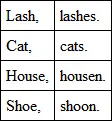
By for-moulding, as foot , feet — tooth , teeth ; or by both word-moulding or sound-moulding and an ending, as brother , brethren .
When the singular shape ends in -sh , -ss , or -x , -ks , it takes on -es for the somely, as lash , lashes ; kiss , kisses ; box , boxes .
And surely, when the singular shape ends in -st , our Universities or some high school of speech ought to give us leave to make it somely by the old ending - en or -es instead of -s — fist , fisten , fistes ; nest , nesten , nestes .
What in the world of speech can be harsher than fists , lists , nests ?
It is unhappy that the old ending in -en , which is yet the main one in West Friesic, should have given way to the hissing s .
Where common names with the definite mark-word become names of places they are wont to lose the article, as The Bath , in Somerset, is now Bath ; The Wells , in Somerset, Wells ; Sevenoaks , not The Seven Oaks , in Kent.
In our version of Acts xxvii. 8, we have a place which is called The Fair Havens , instead of Fairhavens without the mark-word, as the Greek gives the name.
Other thing mark-words offmark all of the things of a name or set from others of another name or set.
All birds, or all the birds in the wood; or all taken singly, as each or every bird; or somely, as set or share ; some few or a few ; many or a many birds.
Another or others beyond one or some under speech.
Any one or more of a some, either apple or any apples.
Both , for the two without others; or
Much or little grass.
Many mark-words were at first thing-names.
Many was a menge , a main or upmingled set; and a great many men would mean a great set or gathering of men.
Few was feo , which seems to have meant at first a cluster or herd; and a few men was a few (cluster) of men.
Some was a sam or som , a set or upmingled mass; and some men was a sam or som of men.
Now if the speech is about the set, it may be onely, as ‘There is a great many,’ ‘there is a small few,’ or ‘a few’; but if the speech is about the bemarked things, the mark-word may well be somely – ‘many men are ’; ‘few men are ’; ‘some men are .’
In the queer wording, ‘many a man,’ ‘many a flow’r is born to blush unseen,’ it is not at all likely that a is the article. It is rather a worn shape, like a in a-mong (an-menge), or a-hunting (an-huntunge), of the Saxon case-word an or on , meaning in ; and it is not unlikely that man has, by the mistaking of a for an article, taken the stead of men – ‘an maeng an men,’ a many or mass in men; as we say ‘a herd in sheep,’ ‘a horde in gold.’ So far as this is true the mark-word may be somely – ‘many a man or men,’ ‘a main in men are .’
None (Saxon na-an , no one) should have a singular verb – ‘None is (not are ) always happy.’
Some mark-words are for a clear outmarking (as single or somely) of things outshown from among others.
Outshowing Mark-words.
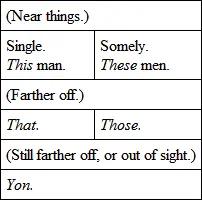
The so-called definite article the is a mark-word of the same kind as this , that , these , and those .
The word the in ‘the more the merrier’ is not the article the – to a name-word. It is an old Saxon outshowing mark-word meaning with that ( mid þy ). ‘The more the merrier’; þy (with that measure), they are more; þy (with that measure), they are merrier.
In the wording ‘the man who ’ or ‘the bird which was in the garden,’ who and which are not the names, but are tokens or mark-words of the things — who of the man , and which of the bird .
A thing may be marked by many mark-words, as ‘the (never to be forgotten) day,’ ‘the (having to me shown so many kindnesses) man is yet alive.’
A long string of mark-words may, however, be found awkward, and so we may take a name-token who for the man , and, instead of the words ‘having to me shown so many kindnesses,’ say, ‘who showed me so many kindnesses.’
Who or that is the name-token for menkind, and which or that for beings of lower life or of no life, as ‘the man who ’ or ‘the bird or flower which was in the garden.’
Who and which are used in the asking of questions – ‘ Who is he?’ ‘ What is that?’
The name-token should follow close on the forename for the sake of clearness. ‘Alfred sold, for a shilling, the bat which William gave him,’ not ‘Alfred sold the bat for a shilling which William gave him,’ if it was the bat that was given to him by William.
These mark-words take the stead of thing-names, and are Name-stead words , and clear the speech of repetitions of the names. The baby may say ‘Baby wants the doll,’ but at length learns to say ‘ I want the doll’; or ‘ Papa , take baby ,’ and afterwards ‘ You take me ’; or ‘Give baby the whip – the whip is baby’s ,’ for ‘ It is mine .’
A man may be beholden to the speech in three ways: —
(1) He may be the speaker, called the First Person;
(2) He may be spoken to, the Second Person (the to-spoken thing);
(3) He may be spoken of, the Third Person (the of-spoken thing);
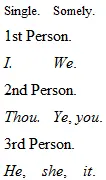
Here the sex is marked.
It is sometimes put for an unforeset thing-name of an unbodily cause or might, as ‘ it rains’; ‘ it freezes.’
For a child or an animal of unknown sex we may take the neuter (or sexless) mark-word it . ‘ It (the child) cries.’
SUCHNESS OR QUALITIES,
and mark-words or mark-wording of suchness, as good , bad , long , heavy .
Suchness may be marked by one word, as ‘a white lily,’ or by a some or many of words, as ‘a very white lily,’ or ‘a most dazzlingly white lily,’ or ‘a lily as white as snow .’
Читать дальшеИнтервал:
Закладка:
Похожие книги на «An Outline of English Speech-craft»
Представляем Вашему вниманию похожие книги на «An Outline of English Speech-craft» списком для выбора. Мы отобрали схожую по названию и смыслу литературу в надежде предоставить читателям больше вариантов отыскать новые, интересные, ещё непрочитанные произведения.
Обсуждение, отзывы о книге «An Outline of English Speech-craft» и просто собственные мнения читателей. Оставьте ваши комментарии, напишите, что Вы думаете о произведении, его смысле или главных героях. Укажите что конкретно понравилось, а что нет, и почему Вы так считаете.
